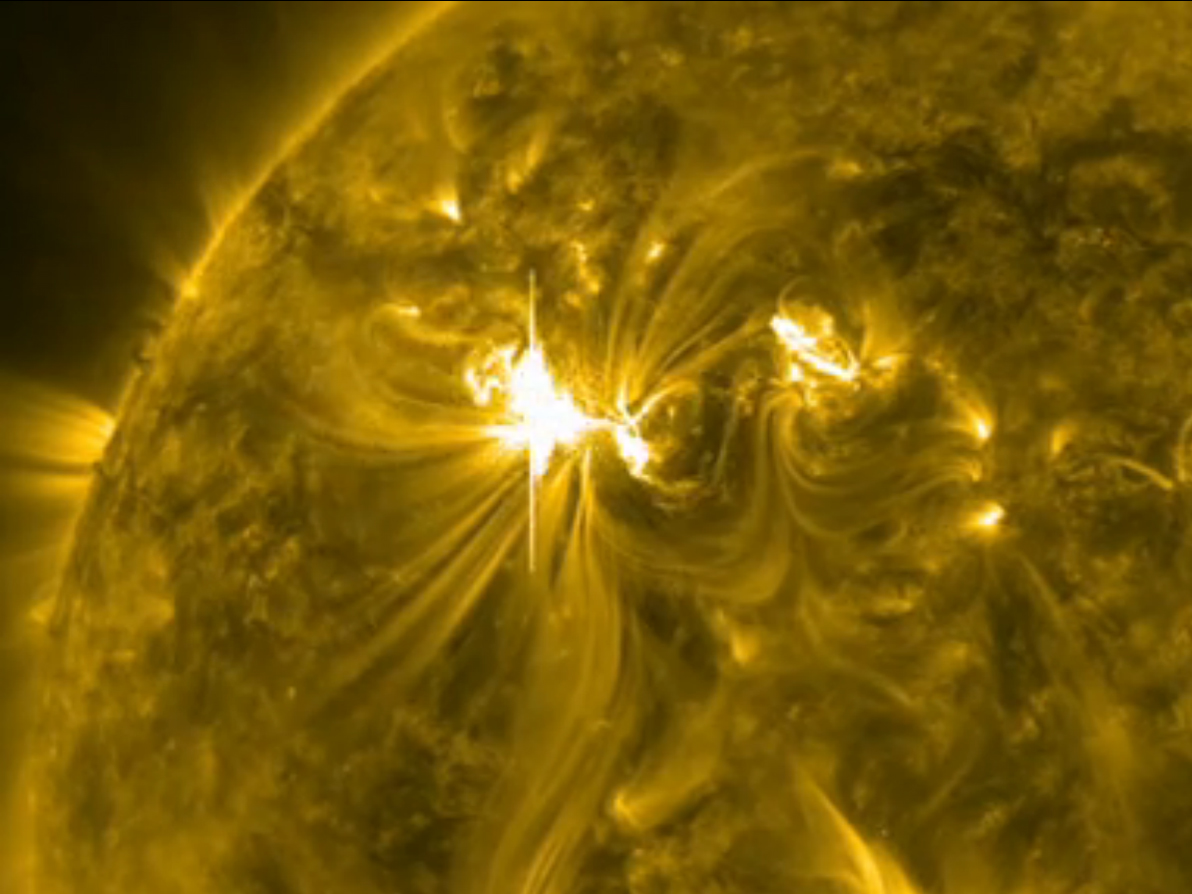Huge Solar Flare's Magnetic Storm May Disrupt Satellites, Power Grids

A massive solar flare that erupted from the sun late Tuesday (March 6) is unleashing one of the most powerful solar storms in more than five years, a solar tempest that may potentially interfere with satellites in orbit and power grids when it reaches Earth.
"Space weather has gotten very interesting over the last 24 hours," Joseph Kunches, a space weather scientist at the National Oceanic and Atmospheric Administration (NOAA), told reporters today (March 7). "This was quite the Super Tuesday — you bet."
Several NASA spacecraft caught videos of the solar flare as it hurled a wave of solar plasma and charged particles, called a coronal mass ejection (CME), into space. The CME is not expected to hit Earth directly, but the cloud of charged particles could deliver a glancing blow to the planet.
Early predictions estimate that the CME will reach Earth tomorrow (March 8) at 7 a.m. EST (1200 GMT), with the effects likely lasting for 24 hours, and possibly lingering into Friday, Kunches said.
The solar eruptions occurred late Tuesday night when the sun let loose two huge X-class solar flares that ranked among the strongest type of sun storms. The biggest of those flares registered as an X5.4-class solar storm on the space weather scale, and the CME from this flare is the one that could disrupt satellite operations, Kunches said.
"When the shock arrives, the expectation is for heightened geomagnetic storm activity and the potential for heightened solar radiation," Kunches said.
This heightened geomagnetic activity and increase in solar radiation could impact satellites in space and power grids on the ground. Some high-precision GPS users could also be affected, he added.
Sign up for the Live Science daily newsletter now
Get the world’s most fascinating discoveries delivered straight to your inbox.
"There is the potential for induced currents in power grids," Kunches said. "Power grid operators have all been alerted. It could start to cause some unwanted induced currents."
Airplanes that fly over the polar caps could also experience communications issues during this time, and some commercial airliners have already taken precautionary actions, Kunches said.
The flurry of recent space weather events could also supercharge aurora displays (also known as the northern and southern lights) for skywatchers at high latitudes, and possibly even mid-latitudes if the storm intensifies.
If you snap an amazing photo of the northern lights sparked by these sun storms and would like to share it for a possible story or image gallery, please contact SPACE.com managing editor Tariq Malik at tmalik@space.com.
This story was provided by SPACE.com, a sister site to LiveScience. You can follow SPACE.com staff writer Denise Chow on Twitter @denisechow. Follow SPACE.com for the latest in space science and exploration news on Twitter @Spacedotcom and on Facebook.

Denise Chow was the assistant managing editor at Live Science before moving to NBC News as a science reporter, where she focuses on general science and climate change. Before joining the Live Science team in 2013, she spent two years as a staff writer for Space.com, writing about rocket launches and covering NASA's final three space shuttle missions. A Canadian transplant, Denise has a bachelor's degree from the University of Toronto, and a master's degree in journalism from New York University.










